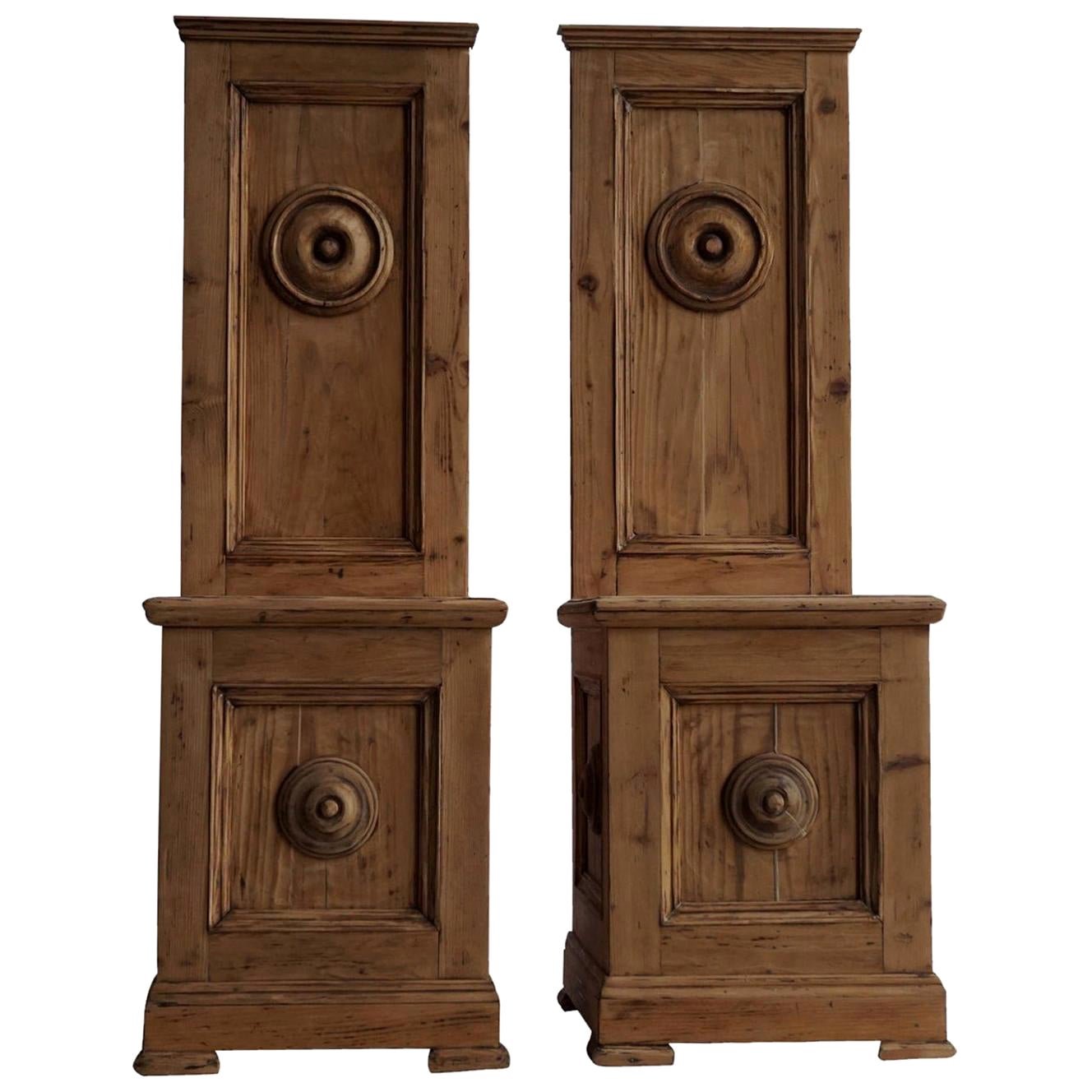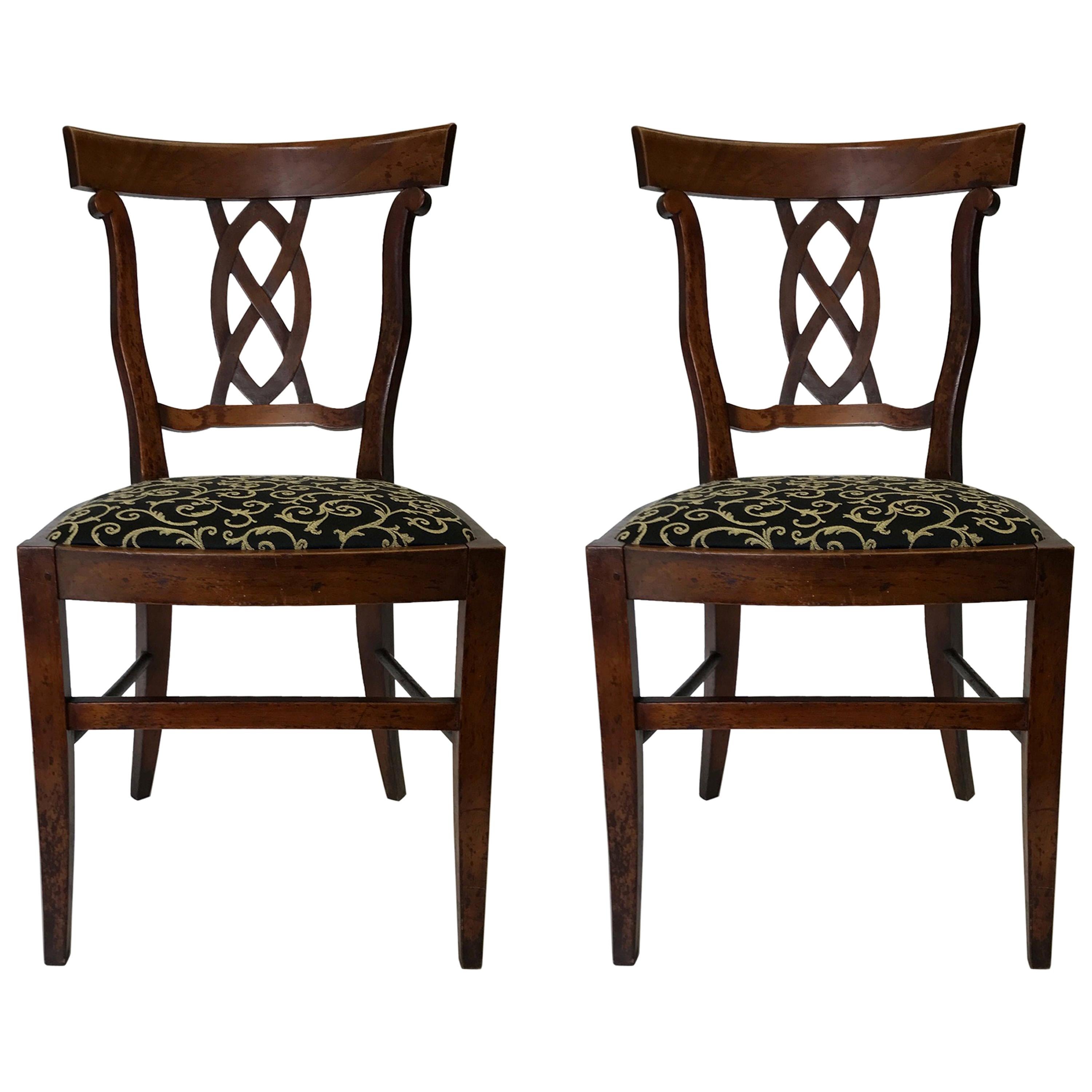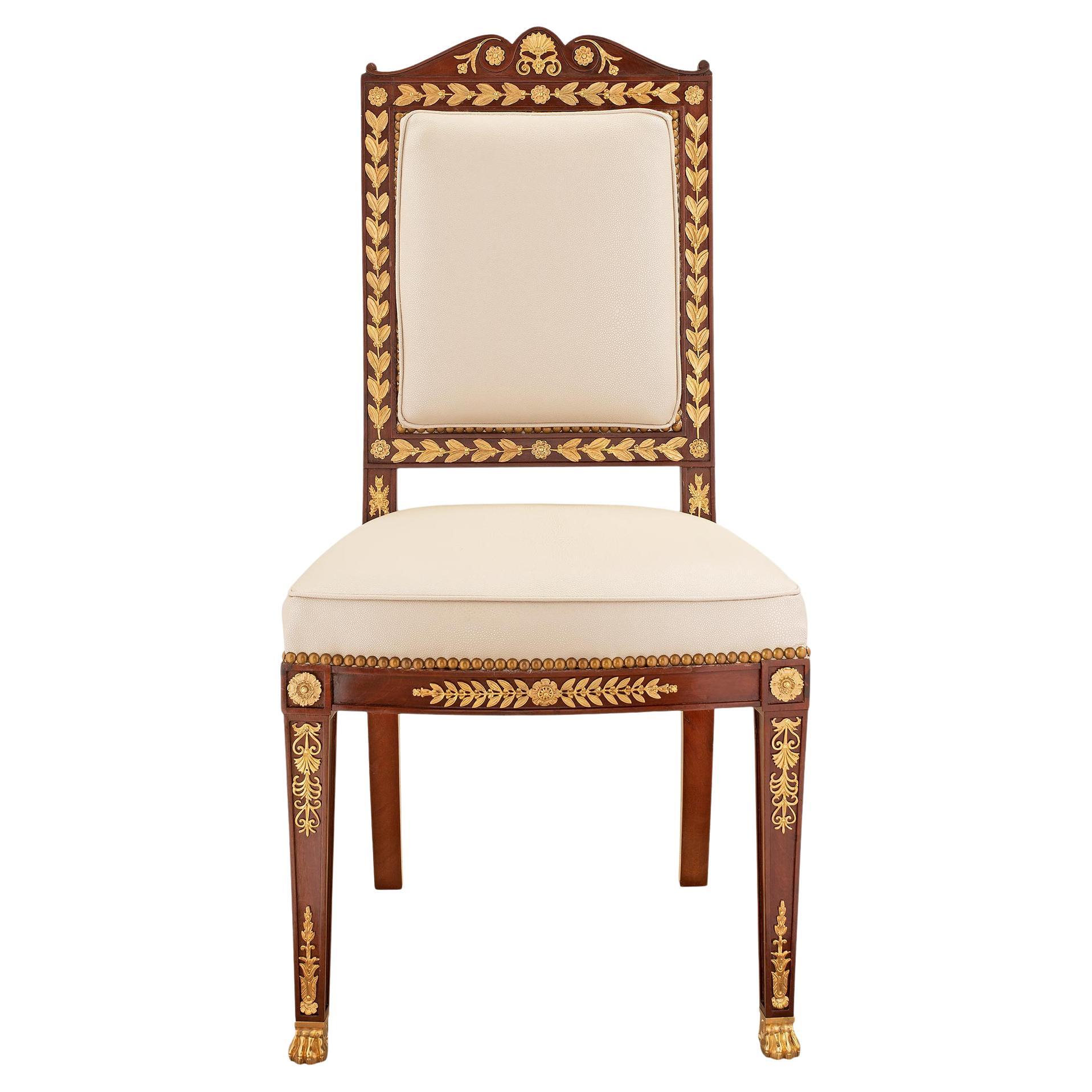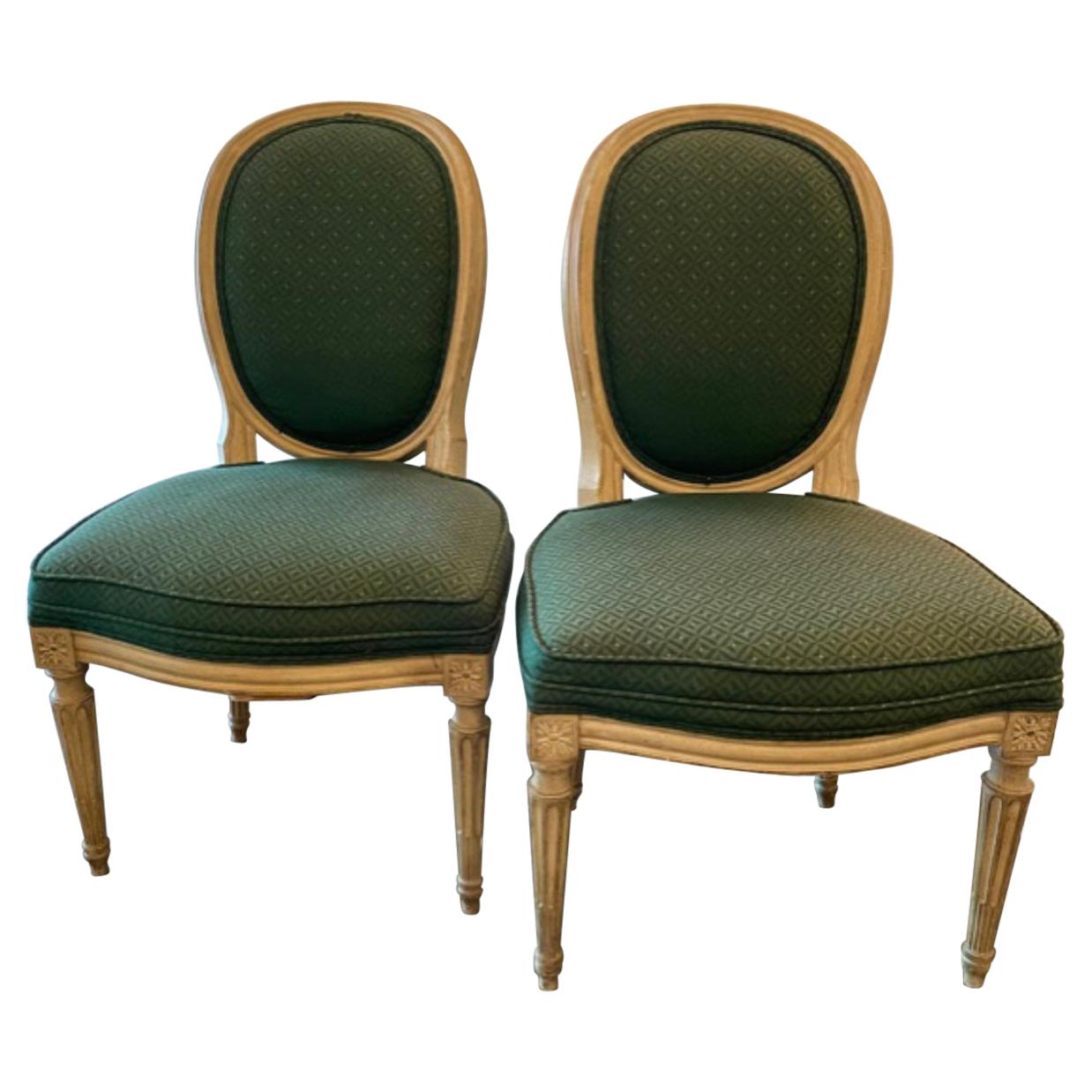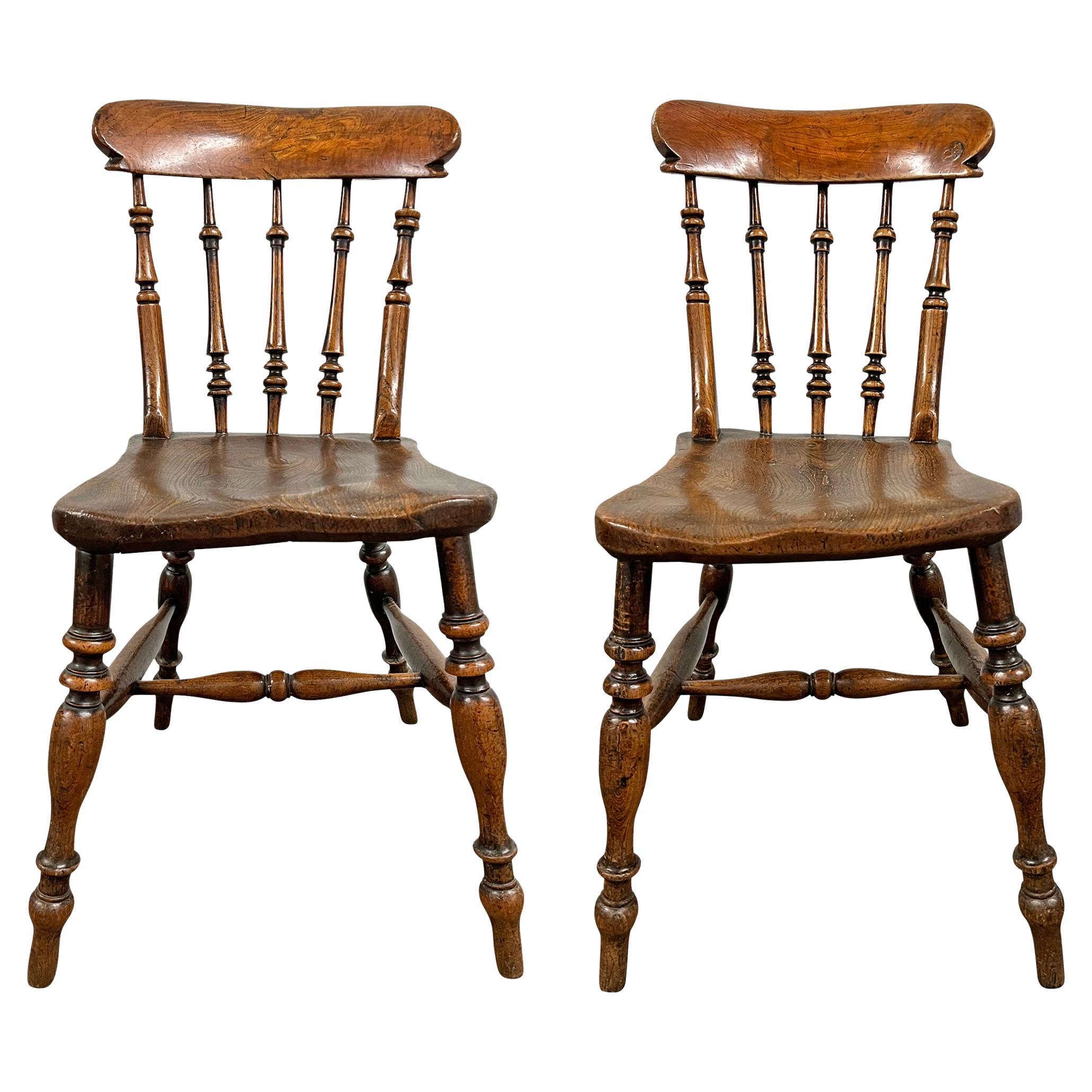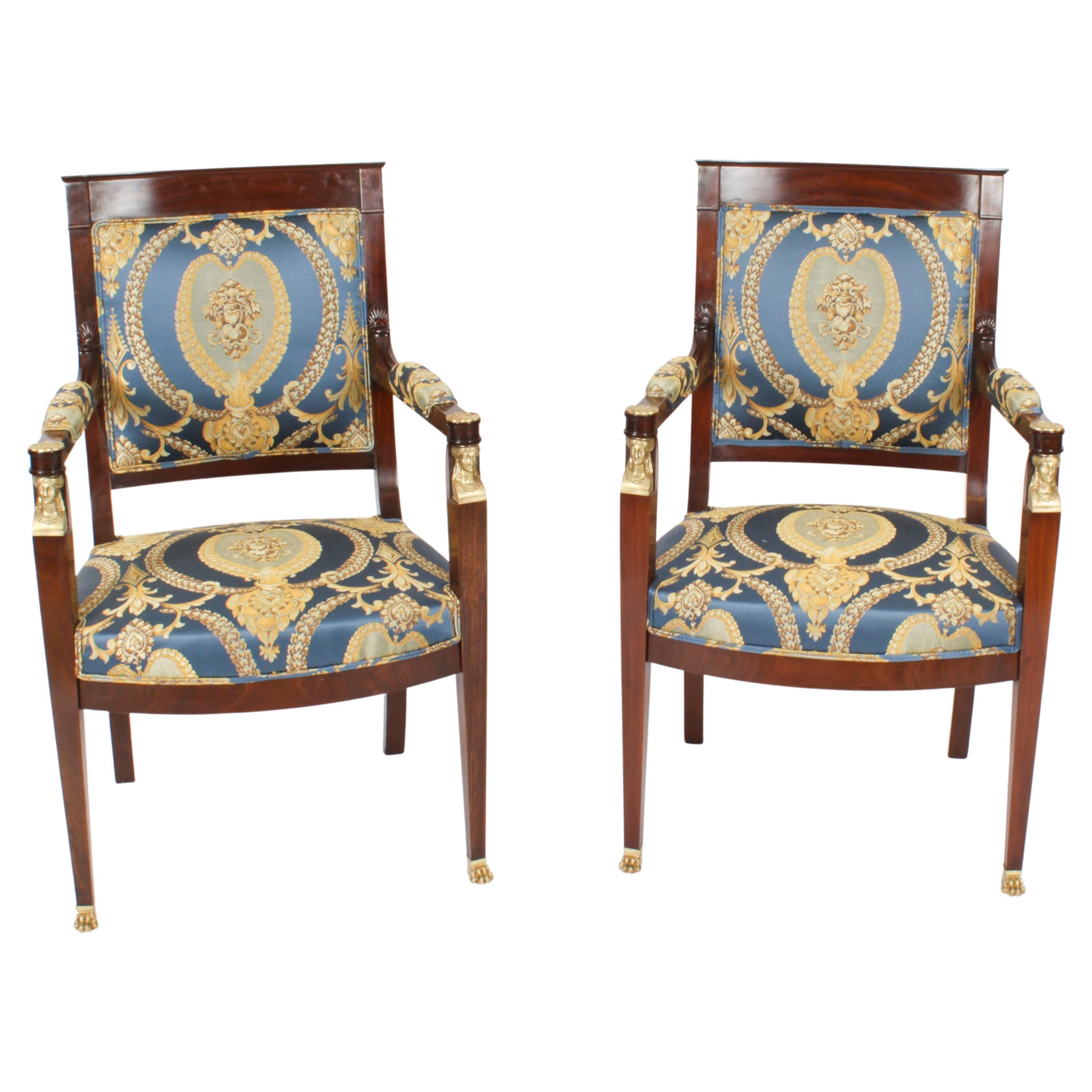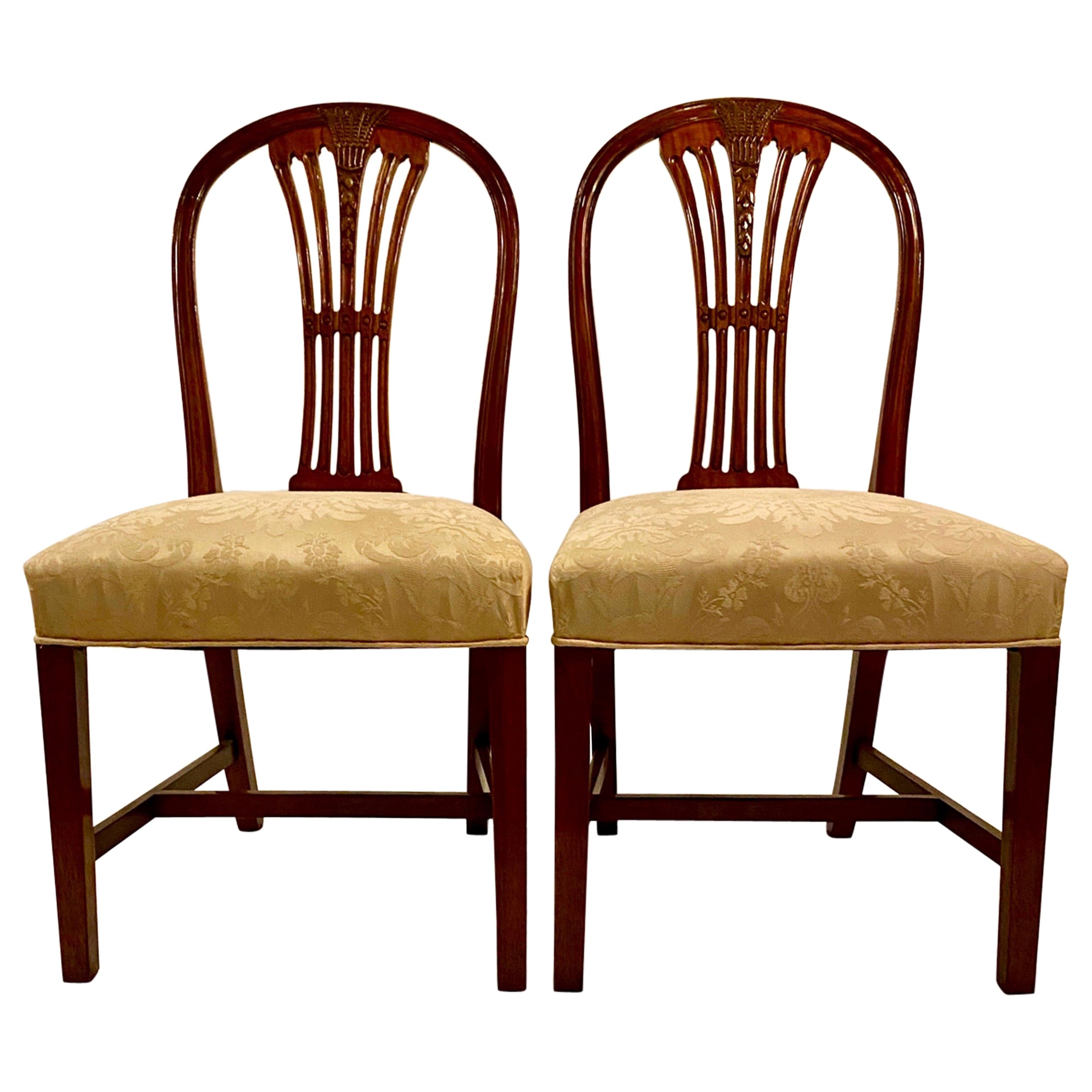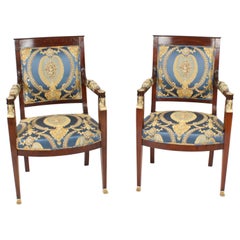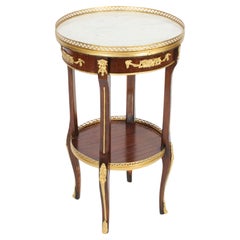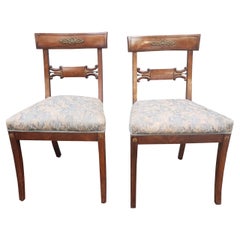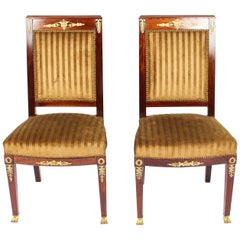
Antique Pair of Empire Ormolu Mounted Side Chairs, 19th Century
View Similar Items
Want more images or videos?
Request additional images or videos from the seller
1 of 18
Antique Pair of Empire Ormolu Mounted Side Chairs, 19th Century
About the Item
- Dimensions:Height: 37.41 in (95 cm)Width: 19.69 in (50 cm)Depth: 22.05 in (56 cm)
- Sold As:Set of 2
- Style:Empire Revival (In the Style Of)
- Materials and Techniques:
- Place of Origin:
- Period:
- Date of Manufacture:circa 1880
- Condition:
- Seller Location:London, GB
- Reference Number:Seller: A1470c1stDibs: LU950622074042
About the Seller
5.0
Platinum Seller
These expertly vetted sellers are 1stDibs' most experienced sellers and are rated highest by our customers.
Established in 1983
1stDibs seller since 2012
1,204 sales on 1stDibs
Typical response time: 1 hour
Associations
LAPADA - The Association of Arts & Antiques Dealers
More From This SellerView All
- Antique French Empire Revival Ormolu Mounted Desk, 19th CenturyLocated in London, GBThis is an exquisite French Empire Revival pedestal desk, circa 1880 in date. This desk has been beautifully crafted from flame mahogany. The top has a striking gold tooled black leather inset writing surface which has a decorative geometric inlaid satinwood and ebony border around it. It features beautifully cast gilded Ormolu mounts including angels, pharaonic herms above paw feet and swan escutcheons. It is further enhanced with male masks wearing nemes headress's on the sides, making it an incredibly imposing and impressive item of furniture. The desk features seven drawers for maximum storage, it is freestanding with a beautifully panelled back and comes complete with the original working locks and keys. This desk will soon become the centrepiece of your furniture collection, there is no mistaking the sophisticated quality and design and it is certain to enhance the style and elegance of any living area, bedroom, or reception. THE BOTANICAL NAME FOR THE MAHOGANY THIS ITEM IS MADE OF IS SWIETENIA MACROPHYLLA AND THIS TYPE OF MAHOGANY IS NOT SUBJECT TO CITES REGULATION. Condition: In excellent condition having been beautifully cleaned, French polished, waxed and releathered in our workshops, please see photos for confirmation. Dimensions in cm: Height 76 x width 150 x depth 80 Dimensions in inches: Height 29.9 x width 59.1 x depth 31.5 Empire style, is an early 19th century design movement in architecture, furniture, other decorative arts, and the visual arts followed in Europe and America until circa 1830. The style originated in and takes its name from the rule of Napoleon I in the First French Empire, where it was intended to idealize Napoleon's leadership and the French state. The style corresponds to the Biedermeier style in the German-speaking lands, Federal style in the United States and to the Regency style in Britain. The previous style was called Louis XVI style, in France. The Empire style was based on aspects of the Roman Empire. It is the second phase of neoclassicism which is also called "Directoire", after a government system. Furniture typically had symbols and ornaments borrowed from the glorious ancient Greek and Roman empires. The furniture was made from heavy woods such as mahogany and ebony, imported from the colonies, with dark finishes often with decorative bronze mounts. Marble tops were popular as were Egyptian motifs like sphinxes, griffins, urns and eagles and the Napoleonic symbols, the eagle, the bee, the initials "I" and a large "N." Gilded bronze (ormolu) details displayed a high level of craftsmanship. Flame mahogany Thomas Sheraton - 18th century furniture designer, once characterized mahogany as "best suited to furniture where strength is demanded as well as a wood that works...Category
Antique 1880s French Empire Revival Desks and Writing Tables
MaterialsOrmolu
- Antique Pair French Empire Revival Ormolu Mounted Armchairs 1870s 19th CenturyLocated in London, GBThis is a fantastic and highly decorative antique pair of French gilt bronze mounted Empire Revival fauteuil armchairs, circa 1870 in date. They have been crafted from fabulous sol...Category
Antique 1870s French Empire Revival Armchairs
MaterialsMahogany
- Antique French Empire Marble & Ormolu Occasional Table, 19th CenturyLocated in London, GBThis is a beautiful antique French Empire Revival circular occasional table with ornate ormolu decoration and a beautiful inset white "Marmo di Carrara" marble top, circa 1880 in dat...Category
Antique 1880s French Empire Revival Tables
MaterialsMarble, Ormolu
- Antique Pair Sheraton Revival Side Chairs Early 20th CenturyLocated in London, GBA superb and striking pair of Sheraton Revival mahogany and satinwood banded chairs, Circa 1900 in date. The high back chairs feature satinwood banding with boxwood and ebonised line inlay and wonderful foliate carved decoration. The square tops are supported by a pair of ionic columns which frame rails above criss-cross splats. The overstuffed golden upholstered seats are above satinwood banded seat rails and the chairs are raised on reeded taping legs that terminate in decoratively carved spade feet. It is rare to find such a perfectly sculpted pair of chairs. THE BOTANICAL NAME FOR THE MAHOGANY THESE CHAIRS ARE MADE OF IS SWIETENIA MACROPHYLLA AND THIS TYPE OF MAHOGANY IS NOT SUBJECT TO CITES REGULATION. Condition: In excellent condition having been cleaned, polished, and waxed in our workshops. Please see photos for confirmation. Dimensions in cm: Height 96 x Width 47 x Depth 49 - Chairs Dimensions in inches: Height 3 foot, 2 inches x Width 1 foot, 6 inches x Depth 1 foot, 7 inches - Chairs Thomas Sheraton (1751 - 1806) was an English cabinetmaker and one of the leading exponents of Neoclassicism. Sheraton gave his name to a style of furniture characterised by a feminine refinement of late Georgian styles and became the most powerful source of inspiration behind the furniture of the late 18th century. His four-part Cabinet-Maker and Upholsterers’ Drawing Book greatly influenced English and American design. Sheraton was apprenticed to a cabinetmaker, but he became better known as an inventor, artist, mystic, and religious controversialist. Initially he wrote on theological subjects, describing himself as a “mechanic, one who never had the advantage of collegiate or academical education.” He settled in London c. 1790, and his trade card gave his address as Wardour Street, Soho. Supporting himself mainly as an author, Sheraton wrote Drawing Book (1791), the first part of which is devoted to somewhat naive, verbose dissertations on perspective, architecture, and geometry and the second part, on which his reputation is certainly based, is filled with plates that are admirable in draftsmanship, form, and proportion. In 1803 Sheraton, who had been ordained a Baptist minister in 1800, published his Cabinet Dictionary (with plates), containing An Explanation of All Terms Used in the Cabinet, Chair and Upholstery Branches with Dictionary for Varnishing, Polishing and Gilding. Some of the designs in this work, venturing well into the Regency style, are markedly unconventional. That he was a fashionable cabinetmaker is remarkable, for he was poor, his home of necessity half shop. It cannot be presumed that he was the maker of those examples even closely resembling his plates. Although Sheraton undoubtedly borrowed from other cabinetmakers, most of the plates in his early publications are supposedly his own designs. The term Sheraton has been recklessly bestowed upon vast quantities of late 18th-century painted and inlaid satinwood furniture...Category
Antique Early 1900s Sheraton Side Chairs
MaterialsMahogany, Satinwood
- Antique French Empire Revival Cylinder Bureau, 19th CenturyLocated in London, GBAn Empire Revival mahogany and parcel gilt cylinder bureau, Circa 1880 in date. The panelled roll top enclosing a green inset leather writing surface and an arrangement of drawers a...Category
Antique 1880s French Empire Revival Desks and Writing Tables
MaterialsMahogany
- Antique Pair Sevres Porcelain Mounted Ormolu Candlesticks 19th CenturyLocated in London, GBThis is a delightful antique pair of 19th century French Sevres porcelain mounted ormolu candlesticks, C1870 in date. The square bases and plain column stems with tulip sconces d...Category
Antique 1870s French Porcelain
MaterialsOrmolu
You May Also Like
- Pair of 19th C Empire Ormolu Mounted, Partial Gilt Mahogany & Upholstered ChairsLocated in Germantown, MDPair of 19th century Empire Ormolu Mounted, Partial Gilt Mahogany & Upholstered side Chairs. Measure 19" in width, 19" in depth and stand 33" tall. Seat height is 18.5".Category
Antique Late 19th Century American American Empire Side Chairs
MaterialsOrmolu
$2,246 Sale Price / set25% Off - 19th Century Empire Ormolu Mounted, Partial Gilt Mahogany & Upholstered ChairLocated in Germantown, MDA 19th century Empire Ormolu Mounted, Partial Gilt Mahogany and Upholstered side Chair. Measure 19" in width, 19" in depth and stand 33" tall. Seat height is 18.5".Category
Antique Late 19th Century American American Empire Side Chairs
MaterialsOrmolu
$1,271 Sale Price25% Off - Pair of Antique Side Accent Chairs, 19th CenturyLocated in Lambertville, NJA pair of walnut side chairs with pierced splat backs, hand carved. Clean and simple lines, new back and gold upholstered slip seats.Category
Antique 19th Century European French Provincial Side Chairs
MaterialsWalnut
$1,250 / set - French 19th Century Empire Style Ormolu and Solid Mahogany Side ChairLocated in West Palm Beach, FLA striking French 19th century Empire st. ormolu and solid mahogany side chair. The chair is raised by handsome ormolu paw feet and square tapered legs. Each leg is accented with dec...Category
Antique 19th Century French Empire Side Chairs
MaterialsOrmolu
- Pair of 19th Century Side ChairsLocated in Dallas, TXPair of 19th century French oval back side chairs.Category
Antique 19th Century Unknown American Classical Side Chairs
MaterialsWood
$1,900 / set - Early 19th Century French Empire Regency Mahogany Side Chair with Bronze OrmoluLocated in Philadelphia, PAEarly 19th century mahogany side chair with bronze ormolu. Item features finely cast bronze ormolu, rounded back with carved top rail, beautiful crotch mahogany veneer, drop seat wit...Category
Antique Early 19th Century French Neoclassical Side Chairs
MaterialsBronze
$4,800 Sale Price20% Off
Recently Viewed
View AllMore Ways To Browse
Musical Chair
Antique Regency Side Chair
Chair With Ormolu
Antique Gilt Pair Chair
Gilded Antique Chair
Pair Of French Desk Chairs
Empire Bronze Chairs
French Ormolu Chair
Eagle Chair
Chairs Flame Pair
French Empire Side Chair
Antique French Napoleon Chairs
Antique Empire Style Chairs
Empire Style Side Chairs
Pair Antique Mahogany Side Chairs
Antique French Empire Chair
French Gilt Side Chair Pair
Rosewood Victorian Antique Chairs Rosewood Chairs
